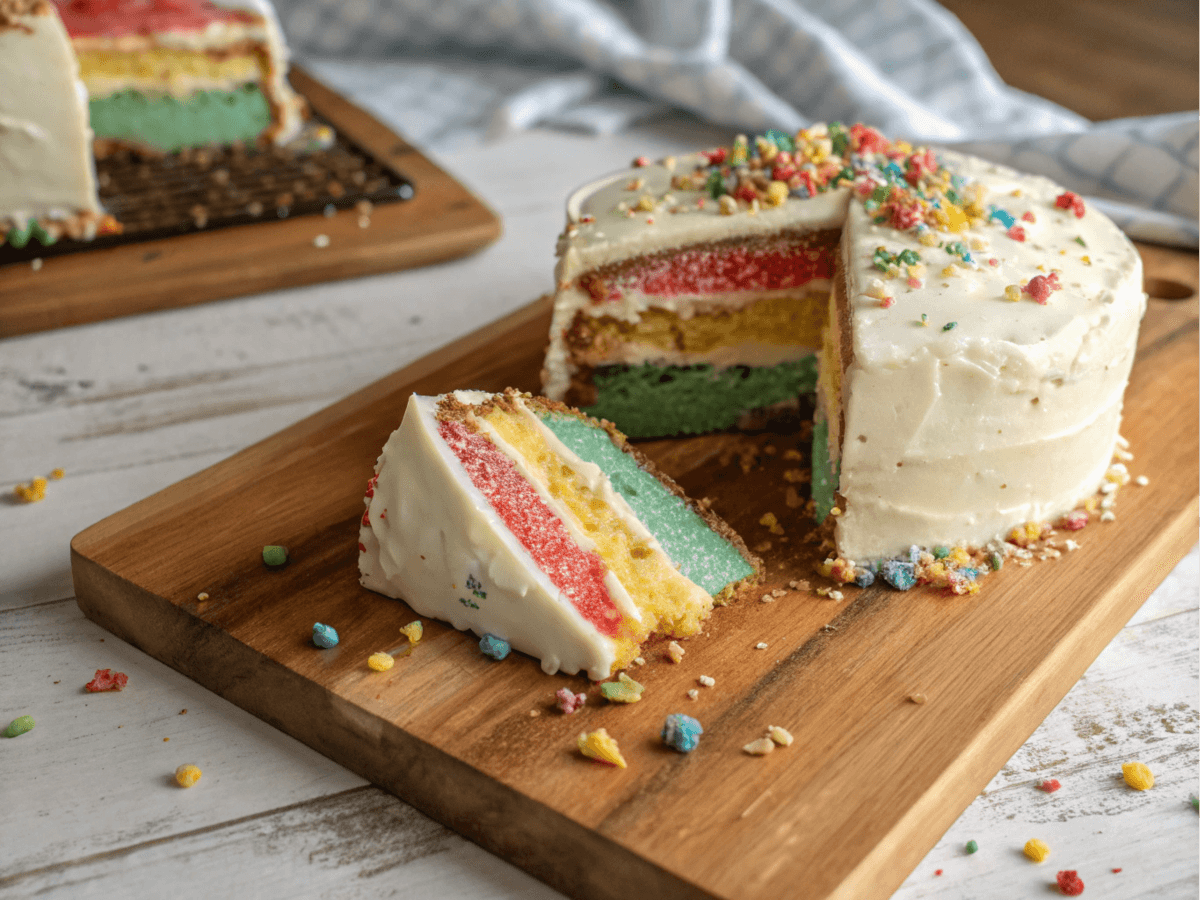Frosting undoubtedly adds the perfect finishing touch to any cake. Among the many options, cream cheese frosting stands out due to its creamy texture and tangy flavor. However, can you frost a cake with cream cheese frosting? Yes, you certainly can! Whether you bake for a party, a celebration, or just for fun, this guide explicitly explains how to frost a cake like a pro.
Part 1: What Is Cream Cheese Frosting and Why Is It So Popular?
The Basics of Cream Cheese Frosting
If you’ve ever wondered what makes cream cheese frosting so irresistible, it all comes down to its simplicity. At its core, this frosting is made from just three ingredients: cream cheese, butter, and powdered sugar. Some recipes toss in a splash of vanilla extract for extra oomph. Honestly, it’s hard not to love something that’s both easy to whip up and downright delicious.
But wait—what sets it apart from other frostings? Unlike buttercream, which can sometimes feel overly sweet, cream cheese frosting brings a subtle tanginess that balances out sugary desserts perfectly. Plus, it pairs beautifully with spiced cakes, fruity treats, and chocolatey goodies alike.
Why Bakers Love Using Cream Cheese Frosting
You know how some things just work? That’s cream cheese frosting for bakers. Not only does it taste amazing, but it also pipes like a dream, making it ideal for decorating cakes and cupcakes. Seriously, who doesn’t love a swirl of frosting that looks as good as it tastes?
Another reason it’s a fan favorite? Versatility. From holiday feasts to casual bake sales, this frosting fits every occasion. And hey, if you’re worried about impressing guests, trust me—this frosting does half the work for you.
So, whether you’re new to baking or a seasoned pro, cream cheese frosting is a must-have in your dessert arsenal. After all, life’s too short for boring frosting, right?
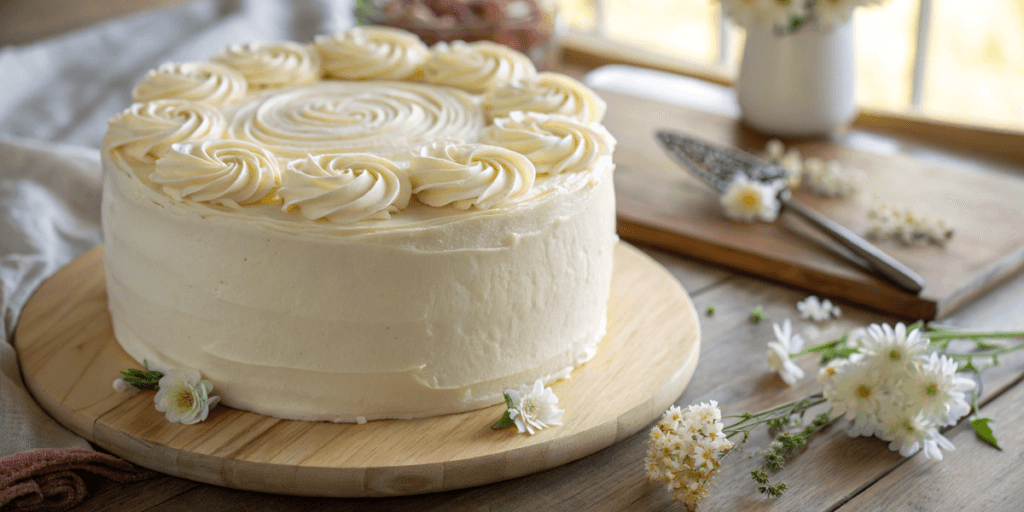
Part 2: Can You Frost a Cake with Cream Cheese Frosting?
Alright, let’s cut to the chase—can you frost a cake with cream cheese frosting? The short answer is yes, absolutely! But here’s the deal: not all cakes are created equal when it comes to pairing them with this tangy, creamy goodness. Let’s break it down so you can nail the perfect combo every time.
How to Choose the Right Cake for Cream Cheese Frosting
First things first, you’ve gotta think about flavor balance. Cream cheese frosting has a rich, slightly tangy profile, which means it pairs best with cakes that have bold or warm flavors. Think carrot cake, red velvet, spice cake, or even pumpkin cake. These desserts bring their own unique vibes, but they all play nicely with the frosting’s zesty kick.
On the flip side, if you’re working with something super light—like angel food cake—you might want to rethink your strategy. Why? Because the frosting could overpower the delicate flavor of the cake. It’s all about finding harmony, you know?
Oh, and here’s a pro tip: chill your cake layers before frosting. This helps prevent crumbs from messing up that smooth finish you’re aiming for. Trust me, it makes a world of difference!
Tips for Spreading Frosting Smoothly
Now, let’s talk technique. Spreading cream cheese frosting can be a bit tricky if you don’t know what you’re doing. First off, make sure your frosting is at the right consistency—not too stiff, not too runny. If it feels a little soft, pop it in the fridge for 10-15 minutes to firm up.
When you’re ready to frost, grab an offset spatula—it’s a total game-changer. Start by applying a thin “crumb coat” to seal in any loose crumbs, then chill the cake again before adding the final layer. This two-step process ensures a flawless finish.
And hey, don’t stress if it’s not picture-perfect on the first try. Practice makes progress, and honestly, most people care more about how it tastes than how it looks.
So, there you have it—yes, you can frost a cake with cream cheese frosting, and with these tips, you’ll do it like a pro. Now, let’s move on to making the frosting itself.
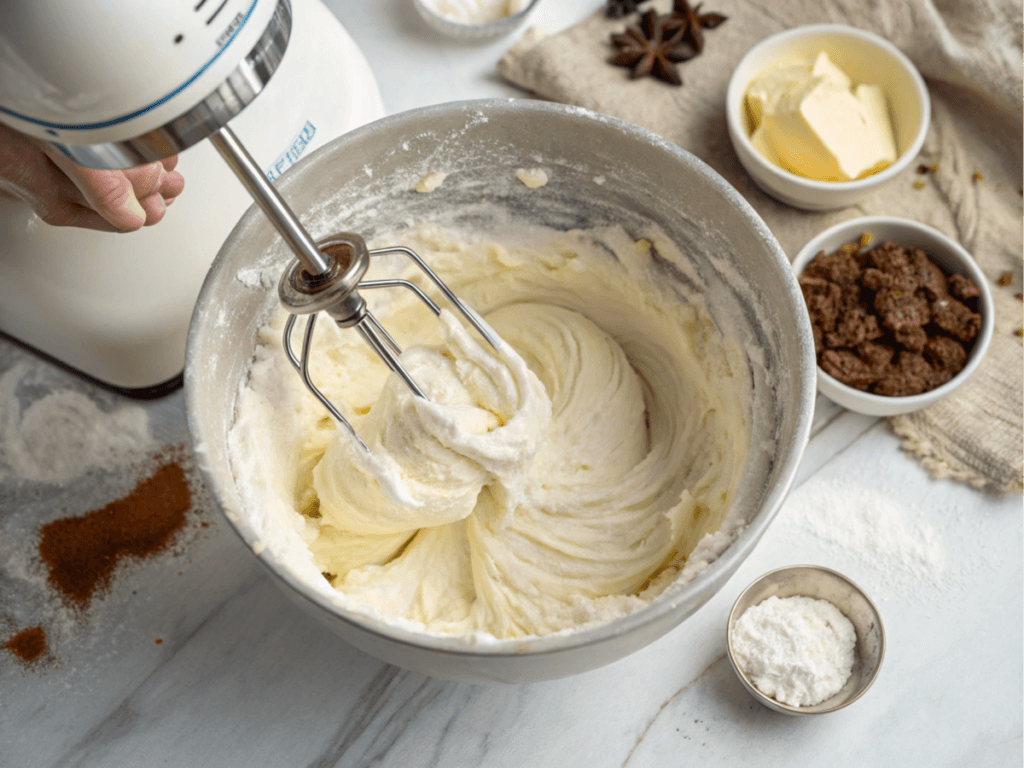
Part 3: Step-by-Step Guide to Making Cream Cheese Frosting
Let’s get one thing straight: making cream cheese frosting isn’t rocket science. In fact, it’s probably one of the easiest frostings out there. But easy doesn’t mean foolproof—there are still some tricks to getting it just right.
Ingredients You’ll Need for Perfect Frosting
Here’s the beauty of cream cheese frosting—it only takes a handful of ingredients:
- Cream cheese : Go for full-fat, brick-style cream cheese. The spreadable kind won’t give you the same texture.
- Butter : Unsalted is best because it lets you control the salt level. Plus, it adds richness without competing flavors.
- Powdered sugar : Sift it first to avoid lumps. Nobody wants grainy frosting, am I right?
- Vanilla extract : A teaspoon or two adds warmth and depth.
That’s it! Simple, huh?
Common Mistakes to Avoid When Making Frosting
Even though the recipe is straightforward, there are a few pitfalls to watch out for. For starters, don’t overmix. Overbeating can cause the frosting to become too soft or even separate. Just mix until everything’s combined, and then stop.
Another biggie? Using cold ingredients. Both the cream cheese and butter should be softened to room temperature before you start. Cold ingredients won’t blend smoothly, leaving you with lumpy frosting—and nobody wants that.
Also, resist the urge to add too much powdered sugar. Sure, it thickens the frosting, but it can also make it overly sweet and heavy. Start with less, taste as you go, and adjust accordingly.
One last thing: if you’re planning to pipe designs, make sure the frosting is sturdy enough to hold its shape. You can chill it briefly to firm it up if needed.
With these tips in mind, you’re ready to whip up a batch of dreamy cream cheese frosting . And guess what? Once you’ve got the basics down, you can experiment with fun variations—like adding citrus zest or swapping vanilla for almond extract. The possibilities are endless!
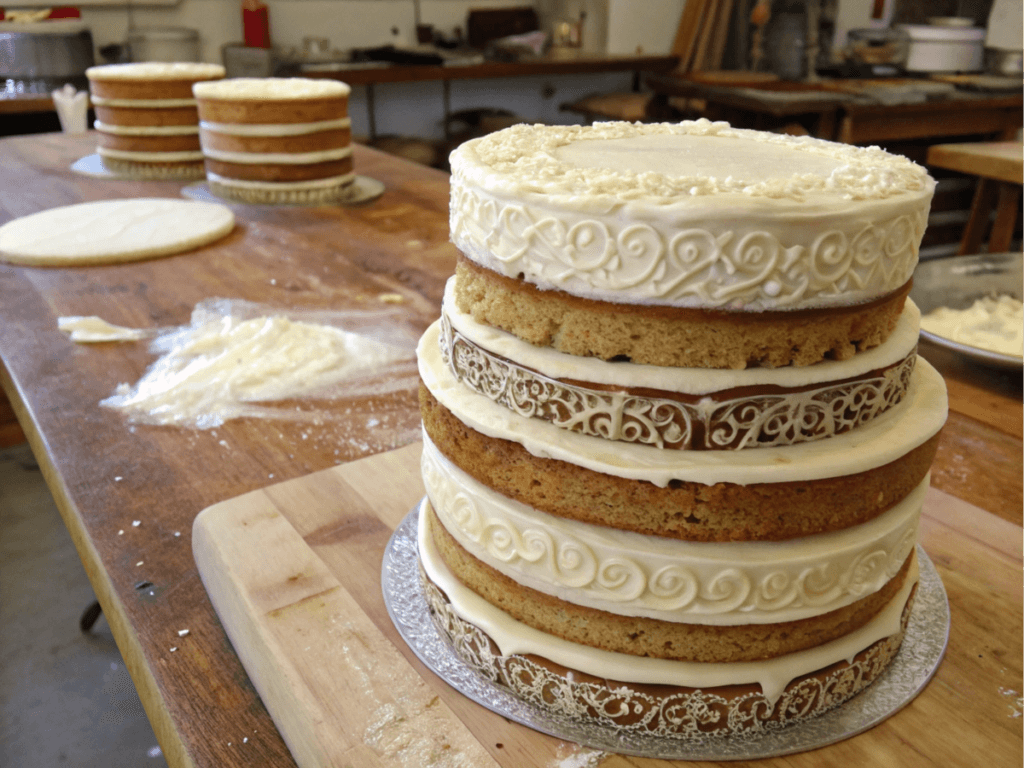
Part 4: Creative Ways to Use Cream Cheese Frosting Beyond Cakes
So, you’ve mastered frosting a cake with cream cheese frosting —nice work! But let’s not stop there. This versatile frosting has way more tricks up its sleeve. From cupcakes to breakfast treats, here are some fun ways to put that tangy goodness to use.
Frosting Cupcakes, Muffins, and More
First up, cupcakes. They’re like mini cakes, so obviously, they’re a no-brainer for cream cheese frosting. Whether you’re baking classic red velvet cupcakes or spiced pumpkin ones, a dollop of this frosting takes them to the next level. Pro tip: Use a piping bag with a star tip for those Instagram-worthy swirls.
But wait—why stop at cupcakes? Muffins love cream cheese frosting too! Try it on banana muffins or blueberry muffins for a sweet-and-tangy twist. Honestly, it’s like giving your muffins a VIP upgrade.
And hey, don’t sleep on cookies either. Soft, chewy cookies—like snickerdoodles or ginger snaps—are perfect candidates for a light schmear of frosting. It’s unexpected, but trust me, it works.
Pairing Flavors with Cream Cheese Frosting
Here’s the thing about cream cheese frosting : it plays well with others. Fruity flavors? Check. Spicy notes? Absolutely. Even chocolate gets along famously with this frosting. For example, try pairing it with cinnamon rolls for a gooey, indulgent treat. Or slather it on a loaf of banana bread for a decadent dessert-for-breakfast situation.
The bottom line? Don’t limit yourself to cakes. With cream cheese frosting , the possibilities are endless. Now, let’s tackle some common issues you might run into when working with this frosting.
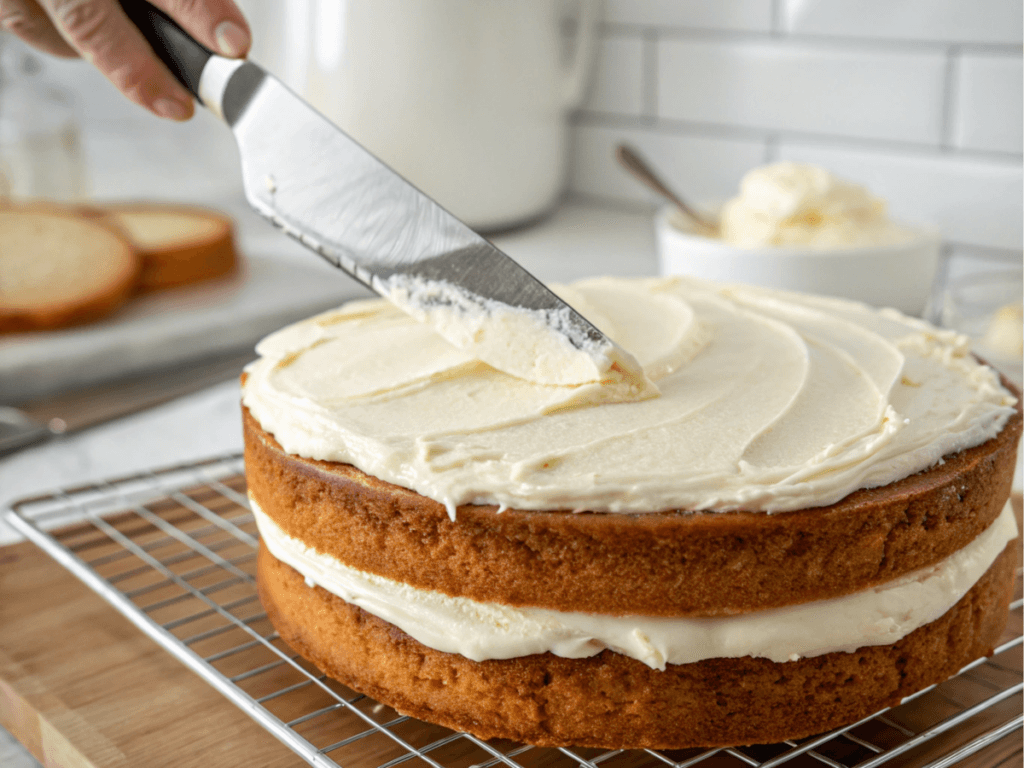
Part 5: Troubleshooting Common Issues with Cream Cheese Frosting
Even the best bakers hit a snag now and then. If you’ve ever ended up with grainy, runny, or just plain weird frosting, don’t panic. We’ve got solutions for all your cream cheese frosting woes.
Fixing Runny or Grainy Frosting
Runny frosting is usually the result of overmixing or using ingredients that aren’t at room temperature. To fix it, pop the frosting in the fridge for 15-20 minutes to firm up. As for graininess, it’s often caused by lumpy powdered sugar. Sifting the sugar before mixing can save you a lot of headaches.
Another culprit? Overbeating the cream cheese. This breaks down its structure, making the frosting too soft. Stick to low-speed mixing, and you’ll be golden.
Storing Leftover Frosting Properly
Got leftover frosting? Lucky you! Store it in an airtight container in the fridge for up to a week. Just remember to bring it back to room temperature and give it a quick stir before using it again. Oh, and here’s a bonus tip: you can freeze frosting for up to three months. Simply scoop it into a freezer-safe bag, press out the air, and thaw it in the fridge when you’re ready to use it.
With these troubleshooting tips, you’ll never have to stress about less-than-perfect frosting again. Next up, let’s talk about how to decorate cakes frosted with cream cheese frosting . Spoiler: it’s easier than you think!

Part 6: Decorating Ideas for Cakes Frosted with Cream Cheese Frosting
Alright, let’s talk about making your cake look as dreamy as it tastes. Decorating a cake frosted with cream cheese frosting doesn’t have to be intimidating. With a few simple tricks, you can turn your dessert into a showstopper—even if you’re not a professional baker.
Simple Techniques for Stunning Designs
First things first: smooth edges are key. If you’ve already mastered the crumb coat (shoutout to Part 2!), you’re halfway there. Use an offset spatula or bench scraper to create clean, even sides. For a rustic vibe, gently swipe the spatula across the surface for that “naked cake” look—it’s trendy and forgiving.
Want to add some flair? Try piping borders around the top and bottom edges of the cake. A star tip works wonders here, giving your cake a polished finish without much effort. And don’t forget sprinkles! Whether it’s crushed nuts, fresh berries, or colorful sprinkles, toppings add texture and pizzazz.
Tools You’ll Need for Professional-Looking Decorations
You don’t need a ton of fancy tools to make your cake pop. A few essentials include:
- Offset spatula : Perfect for smoothing frosting.
- Piping bags and tips : Great for adding decorative touches.
- Bench scraper : Ideal for achieving sharp, clean edges.
If you’re looking for more decorating inspiration, check out our article on “10 Easy Cake Decorating Ideas for Beginners” . It’s packed with step-by-step tutorials to help you level up your skills.
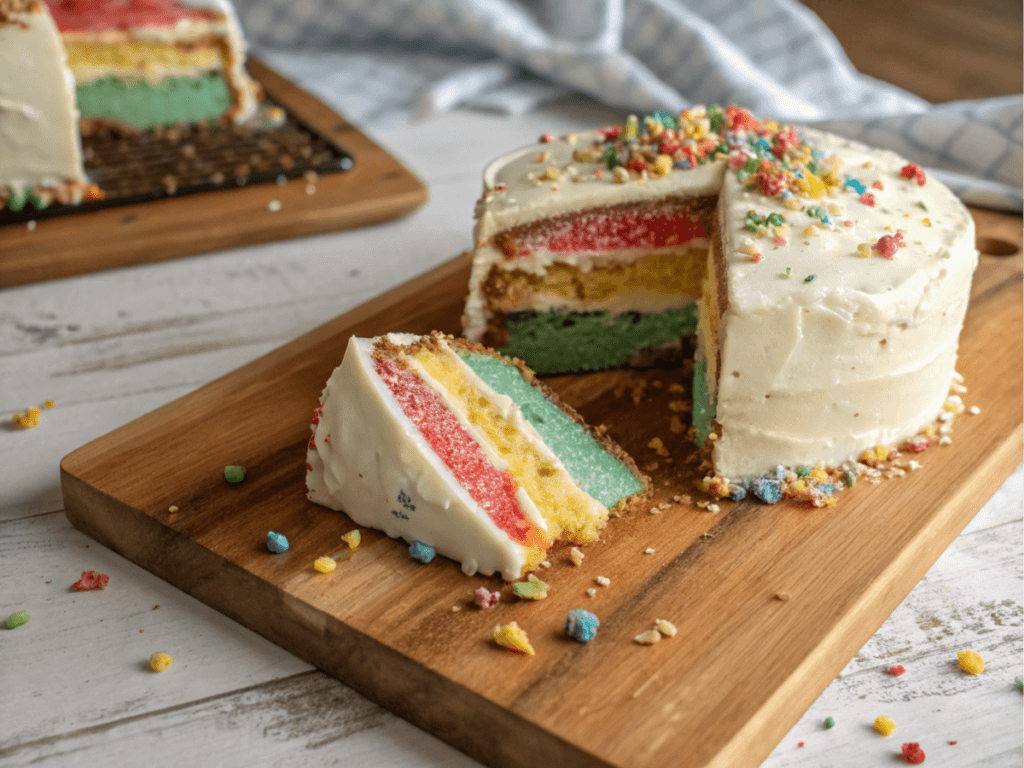
Part 7: Healthier Alternatives to Traditional Cream Cheese Frosting
Let’s face it—sometimes we want to indulge, but other times, we’re looking for healthier options. The good news? You can frost a cake with cream cheese frosting and still keep things lighter. Here’s how.
Low-Sugar Options for Health-Conscious Bakers
If you’re watching your sugar intake, try swapping powdered sugar for a low-carb sweetener like erythritol or monk fruit. These alternatives mimic the sweetness of sugar without the blood sugar spike. Just keep in mind that they might alter the texture slightly, so experiment to find what works best for you.
Another trick? Cut back on the amount of sweetener altogether. Cream cheese has a naturally rich flavor, so you might not need as much sugar as you think. Start small, taste as you go, and adjust to your preference.
Vegan Substitutes for Dairy-Free Frosting
For those avoiding dairy, vegan cream cheese and plant-based butter are game-changers. Brands like Miyoko’s or Violife make excellent dairy-free cream cheese that blends beautifully into frosting. Pair it with coconut oil or vegan butter, and you’ve got a plant-based frosting that’s just as creamy and delicious.
Looking for more healthy baking swaps? Our guide to “Healthy Baking Substitutes That Actually Work” has got you covered. From flours to sweeteners, it’s a treasure trove of tips for guilt-free treats.
Part 8: FAQs About Cream Cheese Frosting
Let’s clear up some common questions about cream cheese frosting . Chances are, you’ve probably wondered about a few of these yourself—so here’s the scoop!
Can You Freeze a Cake Frosted with Cream Cheese Frosting?
Absolutely, you can! However, there’s a trick to doing it right. First, make sure the cake is well-wrapped to avoid freezer burn. Then, store it in an airtight container or cover it tightly with plastic wrap and foil. After that, when you’re ready to serve, simply let it thaw in the fridge overnight. Honestly, it’s easier than you might think!
Does Cream Cheese Frosting Need to Be Refrigerated?
Yes, it definitely does. Since cream cheese is perishable, this frosting can spoil if left out at room temperature for too long. Therefore, always keep frosted cakes refrigerated. That said, take them out about 30 minutes before serving to let the flavors shine.
Pro tip: If you’re transporting a frosted cake, keep it cool with ice packs. This way, the frosting won’t soften or melt.
Got more questions? Feel free to drop them in the comments—we’d love to help!
Part 9: Final Thoughts on Using Cream Cheese Frosting (150 words)
Recap: Why Cream Cheese Frosting Is a Must-Try
Let’s be real—cream cheese frosting is a total rockstar in the baking world. Not only is it versatile, but it also adds a tangy twist that pairs beautifully with so many desserts. Whether you’re frosting a cake, jazzing up cupcakes, or experimenting with healthier alternatives, this frosting has got your back. In fact, its creamy texture and rich flavor make it a crowd-pleaser every single time.
If you’ve ever wondered, “Can you frost a cake with cream cheese frosting?” , the answer is a resounding yes! It’s perfect for everything from layered cakes to simple sheet cakes. Plus, it’s easy to work with once you know the basics.
Quick Tips for First-Time Users
If you’re new to using cream cheese frosting , start simple. For instance, pair it with a classic like carrot cake or red velvet, and focus on nailing the basics—like getting the consistency just right and spreading it smoothly. Remember, practice makes perfect!
Additionally, don’t stress too much about making everything look “Pinterest-perfect.” At the end of the day, people care more about how it tastes—and trust me, this frosting delivers.
So, what are you waiting for? Grab your mixer, whip up a batch, and get creative. Whether you’re frosting cakes, muffins, or cinnamon rolls, cream cheese frosting is here to take your desserts to the next level.
For more delicious recipes, check out our “Ultimate Guide to Baking with Frosting” . Happy baking!

